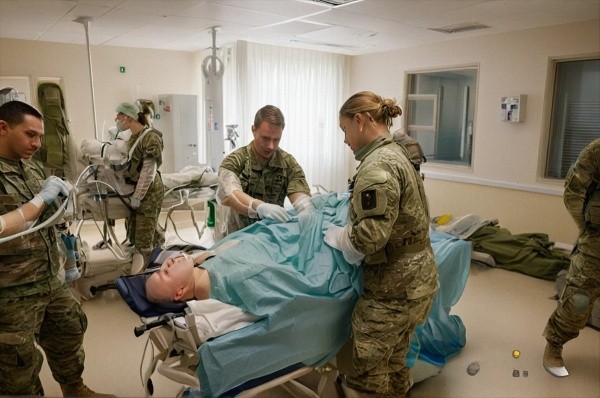Iran’s Plan to Strike Back Against the U.S.
Iran’s Military Preparations Following U.S. Attacks
Loading...

The US has blamed Iran for a drone strike on its base in the northeast of the country
Overview of the Incident
The Pentagon has confirmed that eight U.S. troops were injured in a drone strike on their base located in northeastern Syria. This attack, which occurred at the Rumalyn Landing Zone (RLZ) in Rimelan, has been attributed to forces backed by Iran. Initial reports had indicated no casualties, but further evaluations revealed the injuries sustained by the personnel stationed at the base.
Details of the Attack
Air Force Major-General Patrick Ryder, the spokesperson for the U.S. Department of Defense, provided updates on the situation during a press briefing. He stated that the injured troops were treated for traumatic brain injuries and smoke inhalation, with three of them already returning to duty. The drone strike reportedly ignited a fire at the installation, as evidenced by footage shared online shortly after the incident.
The Pentagon is currently investigating which specific militia group may have executed the attack, although they have indicated a strong belief that it was carried out by Iran-backed forces. An unnamed U.S. official noted that medical evaluations and damage assessments were ongoing following the strike.
Background on U.S. Presence in Syria
Rimelan, situated in Syria’s Hasakah governorate, has been a strategic location for U.S. forces since late 2015 when they took control of the Abu Hajar airport. The base has played a crucial role in supporting U.S. troops and their Kurdish allies in the ongoing fight against the Islamic State (IS), which had seized significant territories in Syria and Iraq in 2014. The U.S. military presence in Syria, which currently numbers around 900 troops, aims to prevent a resurgence of IS and to support local Kurdish forces.
Despite the U.S. military's stated mission, their presence has been met with opposition from the Syrian government, which views it as a violation of international law. The Kurdish militias, who have been instrumental in combating IS, have also resisted reintegration into the Syrian state.
Rising Tensions and Future Implications
The drone attack on the U.S. base is part of a broader pattern of escalating tensions in the region, particularly involving Iranian-backed militia groups. The Pentagon has reported that U.S. forces have faced numerous attacks in both Iraq and Syria, with the frequency of these incidents increasing in recent weeks. This uptick in aggression has raised concerns about the safety of U.S. personnel and the potential for further military engagement.
In response to the drone strike and other recent attacks, the U.S. military has conducted retaliatory strikes against facilities used by Iranian forces in Syria. These actions are intended to send a clear message to Iranian-backed groups that attacks on U.S. forces will not be tolerated.
Conclusion
The recent drone attack on the U.S. base in northeastern Syria underscores the volatile security situation in the region and the ongoing threat posed by Iranian-backed militias. As the Pentagon continues to assess the situation and respond to these provocations, the safety of U.S. troops remains a top priority. The incident highlights the complexities of U.S. military involvement in Syria and the challenges faced in stabilizing the region amidst competing interests and ongoing conflicts.
BMM - MBA
Iran’s Military Preparations Following U.S. Attacks
Troops remain in five strategic locations, raising fears of renewed tensions and long-term occupation.
Opposition forces have taken control of the capital after a significant offensive. Here is how it unravelled.
